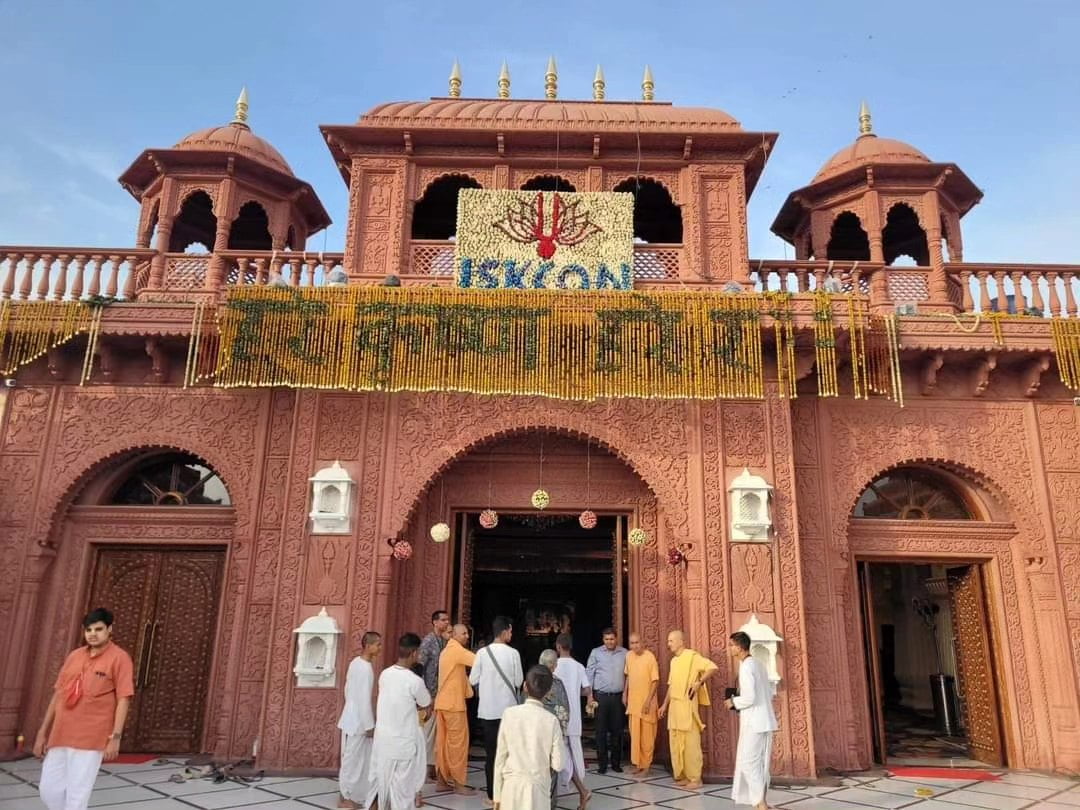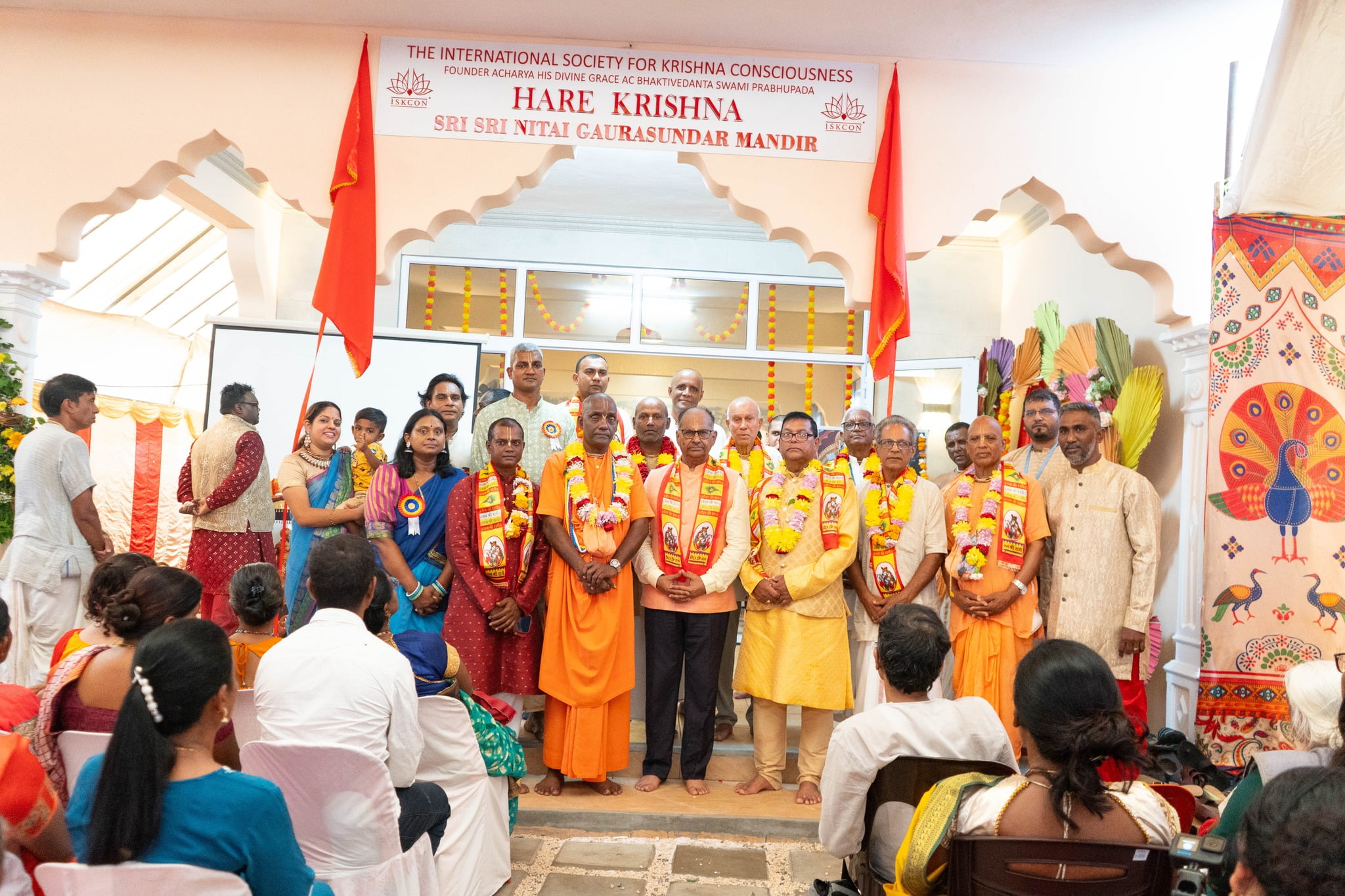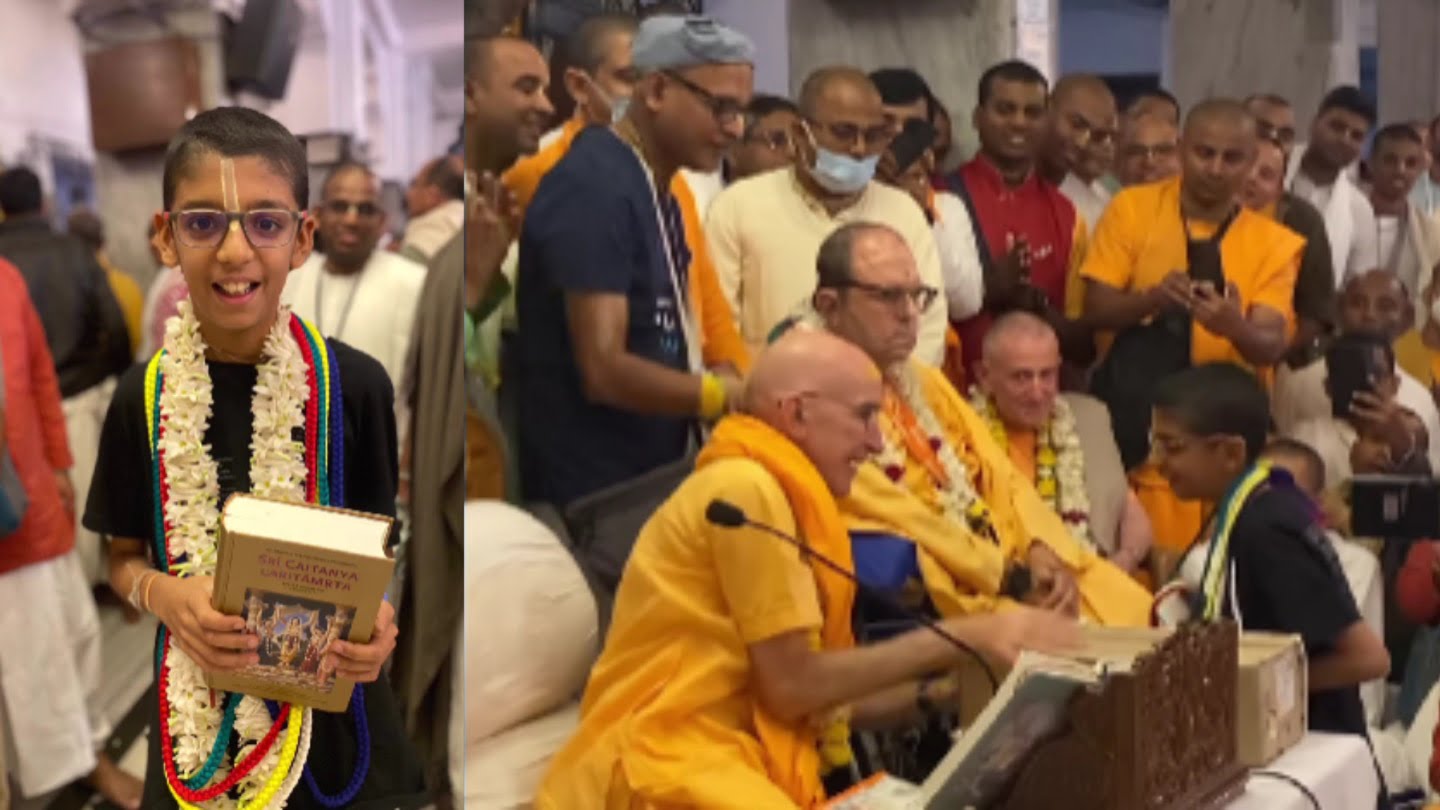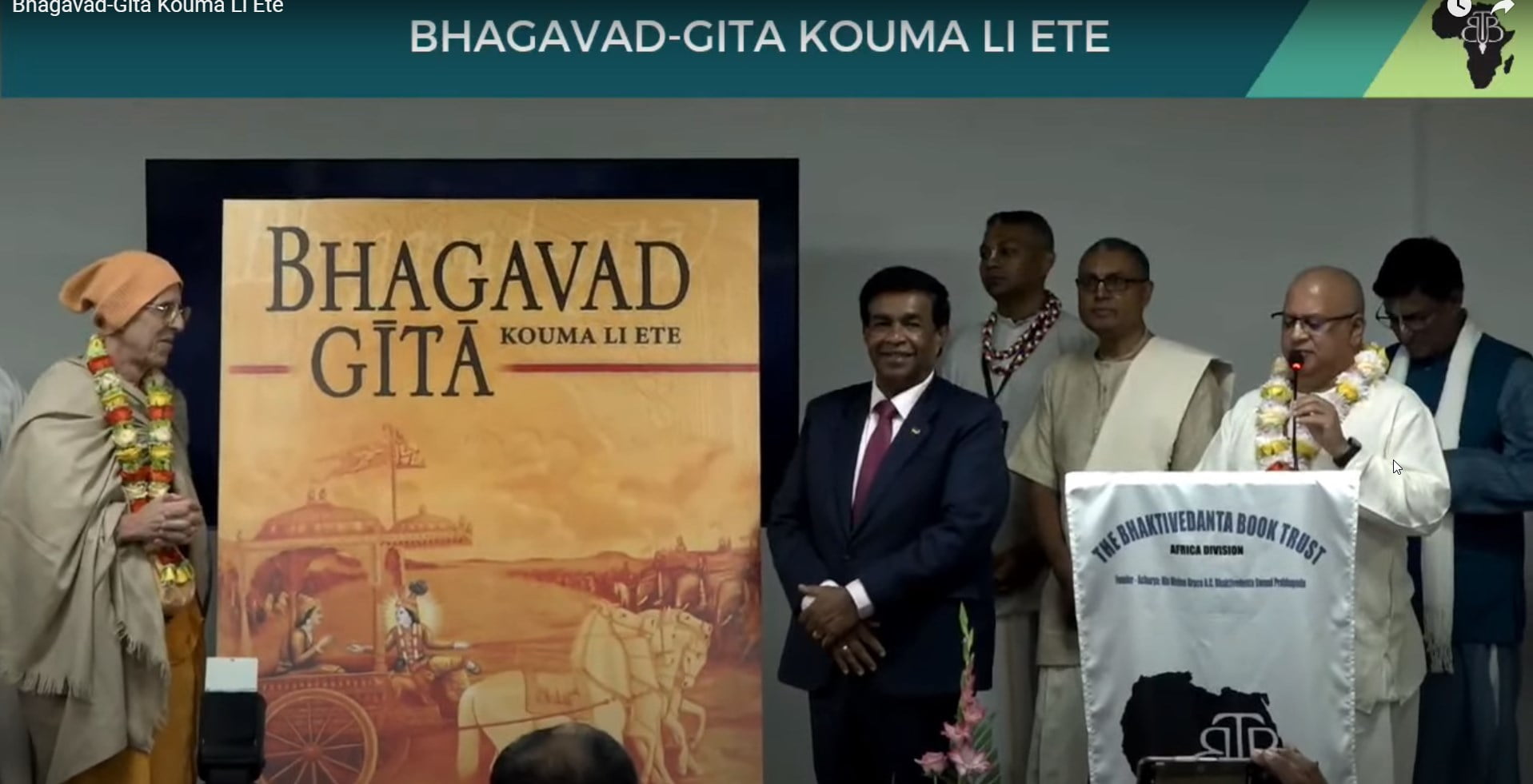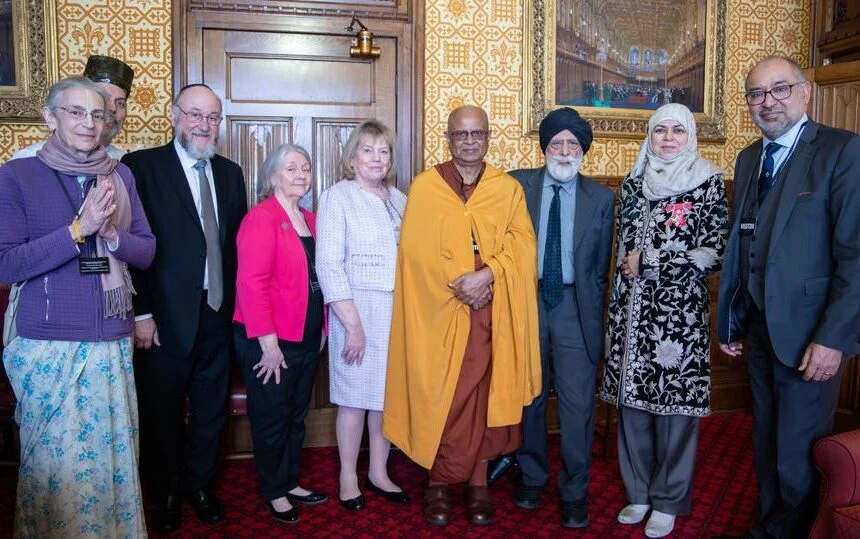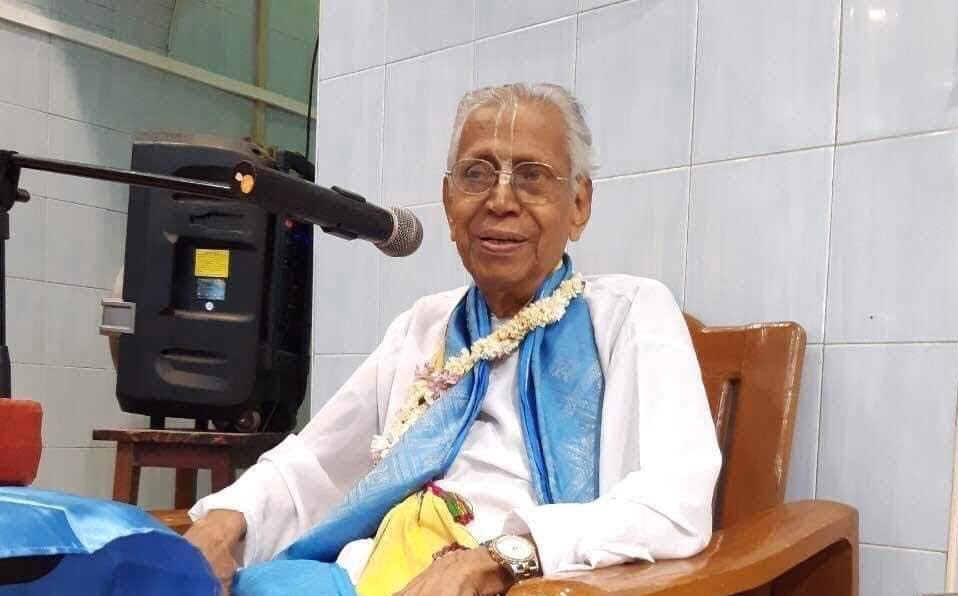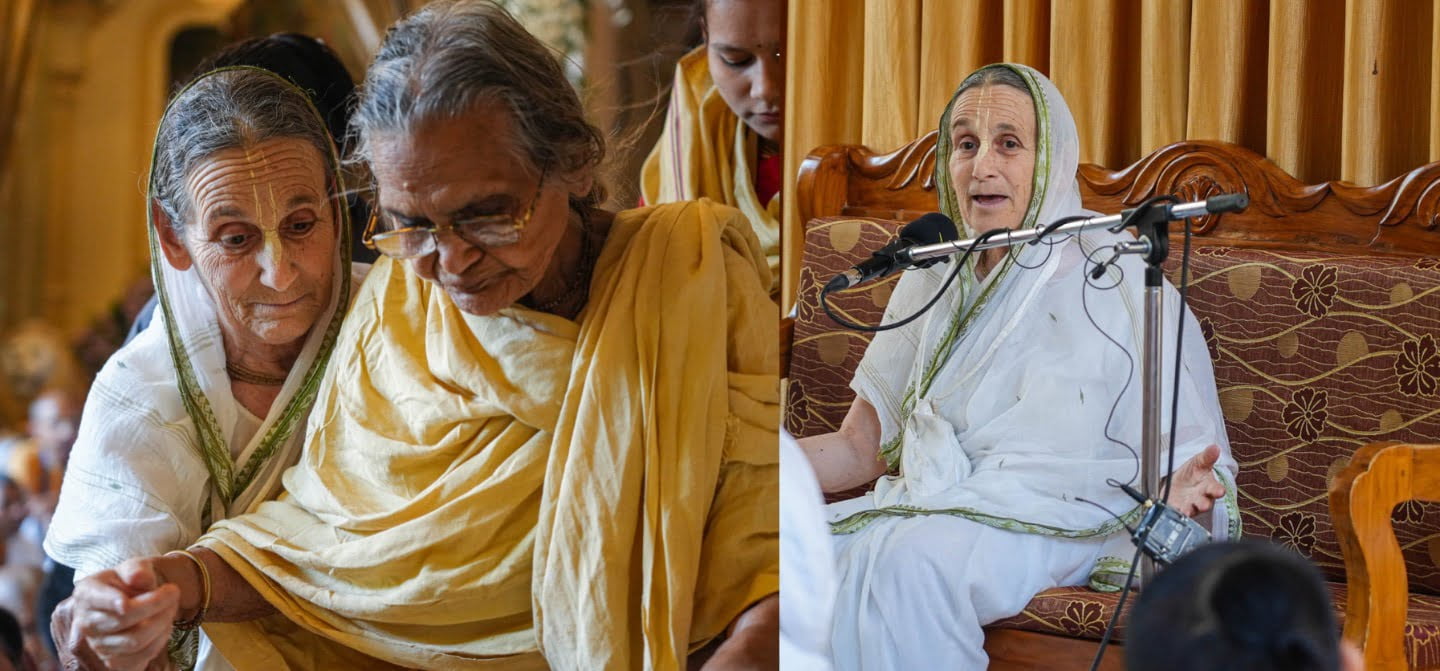Ekendra Dasa: 100% Certified Philosobilly
By Madhava Smullen | Apr 04, 2009
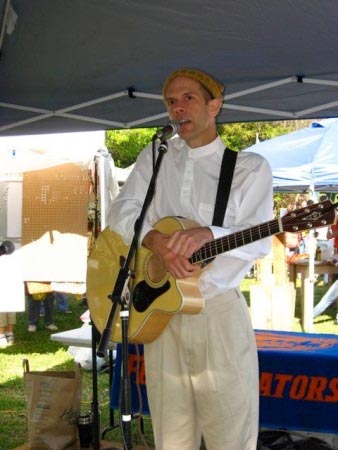
When Eric Dailey’s grandfather gave him a piano and music lessons for his tenth birthday, he learned just about as much as most kids learn when pushed to achieve their elders’ dreams: nothing. But at thirteen, he suddenly took up music with a passion – just not the kind his old grand-daddy had been hoping for. It was New York, the 1980s were in full swing, and every one of Eric’s friends seemed to be in a band. It was just what you did. Enamored with visions of rock stardom, Eric let himself get swept up in the wave, and weaseled his way into a succession of bands in whatever way he could – usually as bassist or drummer.
Of course, as the years rolled on, he needed a steady income to support these musical forays. But Eric was a unique spirit – you weren’t about to find him working as a 9-5 office drone or grocery shelf-stacker. Instead, he used his college theater skills to audition for one of the era’s biggest Renaissance Fairs, and got the job. Today, his eyes roll up and that particular cheeky expression of bemusement slips onto his face as the memory comes back. “I think they took me on because I seemed just crazy enough to do improv, in Elizabethan dialect, all day long, in the hot sun, in front of a bunch of very drunken bikers and renaissance fair goers,” he says.
The wacky sense of humor that urged a man to strut around in tights with a beard and a Warwickshire accent all day was an integral part of Eric’s makeup, and it seeped into his music too, driving him towards the decidedly niche market of comedy theater rock. “I was part of a duo that would wear outrageous costumes and throw cereal at people,” he recalls, quite deadpan. “At another time I invented a whole back-story for a mock heavy metal band for which I played the drums with giant plastic thigh bones.”
But of all his projects, Eric’s baby was The Fourth Cow Revival with Orchestra – a nine-piece alternative Americana musical theater production which he started with a friend. Not to be outdone in weirdness, they would wear zany costumes, open for themselves as another, cryptically named band, and feature a troupe of dancing girls and ‘guys with pumpkins on their heads.’
Eric’s experimentalism wasn’t without its success. Fourth Cow Revival opened shows for the popular They Might Be Giants, and another of his bands even supported the Ramones when they were in town.
It made sense to go pro. But although Eric’s fan-base was growing, something seemed wrong. “I got to a point where I felt, somewhere deep inside, that I was cheating my audience,” he says. “That I wasn’t giving them all I could. Although we had a big production externally, I felt that something very significant was lacking. So I started searching for what that might be.”
While house-sitting for a renaissance fair colleague in Chicago, Eric found it. A copy of A.C. Bhaktivedanta Swami Prabhupada’s Bhagavad-gita As It Is peeked out from the corner of a bookshelf, and he read the introduction, considering its request to read the rest of the book while at least theoretically accepting Krishna as God. “I can do that,” he thought.
As he read, his prior notion of God as someone who was all powerful, loved everyone, and knew everyone’s heart was amplified. And that God became more personal as Prabhupada described Krishna’s identity and his relationship with his devotee Arjuna with charm, detail and authority. By the time he had finished the book, the author’s combination of humor and absolute certainty in his message had pretty much convinced Eric that he was speaking the truth. He decided he had to go and meet the devotees.
It was 1989 when Eric visited the Chicago ISKCON temple early one Sunday morning. Peeking in through the doors, he saw devotees in swirling robes dancing around like manic dervishes. It wasn’t any stranger than throwing Cheerios at people or sporting a pumpkin as headwear, but somehow in the absence of a stage, such an exhibit scared even the open-minded Eric. This wasn’t theatrics – it was real. “Oh man,” he thought. “This is not what I had in mind. I like the philosophy, but I am not ready to jump up and down at all.” But he waited in the lobby, and when things had calmed down, went in to listen to the lecture. He liked it, ate breakfast with the devotees, and realized he had found himself at last.
Hardcore Shelter
A year later Eric, now known as Ekendra Dasa, was a celibate monk traveling across the Rocky Mountains with a Swami and distributing spiritual literature along the way. It seemed that he couldn’t possibly be further away from his old life. But Ekendra, it turned out, had by no means seen the last of his rock ‘n’ roll days.
At a Vaishnava retreat in Gita-Nagari, he happened upon a devotee called Raghunatha Dasa who, as Ray Cappo, had fronted the hardcore punk band Youth of Today. Ray and his high school buddy Porcell, now also a devotee and known as Paramananda, had been one of the biggest New York City proponents of straightedge – a unique youth movement espousing ideals of vegetarianism, sobriety, and monogamy.
Since joining ISKCON, Ragunath had started a new band called Shelter, and was looking for devotee musicians to be in it. Ekendra hardly had to think about it – he was in. “Raghunath was very charismatic, with a great sense of humor, and a clear sense of purpose,” he says. “I liked him instantly, and I just wanted to be like him – I didn’t care what instrument I had to play.”
The two became good friends, and Ekendra succeeded in peeling himself away from his temple commitments in Chicago to join Shelter first as bassist, then drummer when the previous one left. “Drumming for a hardcore punk band was very different from what I was used to – let’s just say it involved lots of stamina, hydration, and industrial fans pointed in my immediate direction so that I wouldn’t get hypothermia and die,” he laughs. “And that’s when people weren’t stage-diving off the top of my drum set.”
Ekendra calls Shelter his first shot at “the illusion of being a rock star” – Youth of Today had had a huge following, and life was a whirlwind of packed shows, traveling, and extreme volume. But it was also full of Krishna consciousness, sacred food distribution and chanting. The nine-strong band and crew would cook and serve vegetarian food offered to Krishna to the fans they stayed over with on tour, and start their shows by holding a traditional kirtan in the middle of the audience before taking to the stage to belt out their hard rock set.
Their fans loved it, responding even more with the introduction of Shelter’s own record company, Equal Vision. “People would write in enquiring about a bizarre mixture of hardcore lore and Krishna consciousness,” Ekendra recalls. “Stuff like, ‘Could you send me info on your latest artists, some of those neck beads you guys wear, a band t-shirt, a Bhagavad-gita, my favorite group’s latest EP – and by the way, who is Radharani?’”
The hunger for spiritual knowledge escalated at Shelter’s winter shows, where they embarked on their own version of the worldwide ISKCON book distribution marathon. Performing as many consecutive concerts as they could, they’d distribute case after case of Srila Prabhupada’s books from the stage, with fans diving over each other in their eagerness to grab a copy of Science of Self Realization.
It was exhilarating, but Ekendra knew that it was not him. Throughout four years on the road with them, Shelter’s musical style had never really seeped into his bones. He needed to make his own music, music that was close to his heart. So after a mega tour in summer 1993, where he played drums for both Shelter and fellow Krishnacore band 108, Ekendra quit.
From Shelter to Solo
It would take Ekendra some time to set free the music that rested in his heart. In 1994 he took another big step in his life and married Tulasi-Priya Dasi, who would become his ‘better half/manager/editor/back-up singer.’ But for the next two years, he lived at the ISKCON temple in Philadelphia, serving as a priest and suppressing his desire to make music. When he discovered that this was making life difficult for himself and his wife, he finally began to mull over what unique offering he could make to the world of Hare Krishna music.
“I realized that while there were plenty of albums of kirtan and the devotional process, there was nothing about the internal struggle that we go through trying to follow a very pure, very demanding lifestyle,’ he says. “I knew – because I had myself as an example – that it wasn’t easy. So I thought that if I could document that struggle in a compassionate and humorous way, people could relate to it and laugh about it.”
Ekendra released his first album, 1998’s God Project, under his own make-believe label Krishnaphonic Records, and played most of the instruments himself, inviting session musicians in only to add saxophone, fiddle and banjo. With a title lifted from a lecture by ISKCON guru Ravindra Svarupa Dasa about how everyone comes to this world with a mission to boost their false ego – a God project – the album is full of philosophical satire as sharp as a sword. But mostly, it’s just damn good fun. With its unbridled “yeehah” country glee, inflected southern vocals, yodeling, and lyrics like “Shake a leg – gonna decompose,” it’s hard not to giggle from the outset.
“Having not even played live yet, I didn’t know what to expect when I released God Project,” Ekendra says. “But I was determined to test it on an audience beyond the devotee community, just on the off-chance that something I said, or some way that I said it, might warm people up to the idea that Krishna consciousness is a good thing. And, I thought, everybody is a spirit soul and is going through the human experience, so this isn’t just for devotees – it’s for everybody.”
The public agreed. Miami Public Radio presenter Michael Stock, who invited Ekendra to play on his Saturday afternoon folk and acoustic show, commented: “A lot of things in his songs ring true even though he’s on his own chosen path. You don’t have to be a Krishna to identify with it.” Neil Fagan of Performing Songwriter magazine called God Project one of the best DIY albums of the year, saying it was “One of the funniest, most infectious slices of country and rockabilly you’re ever likely to hear. The struggle for the deeper meanings of life are hit head-on in hilarious numbers like ‘Maggot Poo Poo,’ ‘Dogmind,’ and ‘Never-Do-Well.’” And radio stations across the US and Europe gave the record plenty of airplay.
Invigorated, Ekendra settled down to write his second album, 200 Proof Absolute Truth, which he released in 2003. “The title refers to the highest possible concentration of alcohol – the 100 per cent pure flammable stuff that you can’t even buy in stores,” he explains. “If somebody wants to get really plastered, they’ll go for the highest proof they can get. And if somebody wants to be really Krishna conscious, they’ll go for the truth as Srila Prabhupada presents it – undoctored, not watered down – 200 Proof Absolute Truth.”
Meanwhile the album’s byline – 100% Certified Philosobilly – came from a conversation Ekendra had on an airplane. “I had my guitar with me, and the guy sitting beside me asked ‘What kind of music do you play?’” he recalls. “I said, ‘Well, it’s sort of philosophical and sort of like rockabilly – philosobilly, I guess.’ He got a laugh out of that, and so I reckoned I should use it.”
With 200 Proof, Ekendra showed he hadn’t lost his knack for kooky humor and witty observations – songs like “Stink and Wrinkle” and lines like, “Oh, mind”¦ I can’t seem to tame you at all / You are a 24/7 obscene phone call” could have been lifted straight from God Project. But elsewhere, Ekendra sought to prove that he was multi-faceted: With the deeply moving “Strength of the Strong,” a call for help to the Lord in everyone’s heart, and “Callin’ Out The Name of The Lord,” a joyous sing-along, he went straight for the heartstrings. And the album’s more rock-influenced direction lent itself well to songs with a slightly darker satirical edge such as Red Light Up Ahead, which compares trying to enjoy yourself in a material body – while death looms around the corner – to relaxing in a luxury limousine that’s about to crash.
Ekendra’s second album was received with the same enthusiasm as his first. The nationwide Folk Alliance gave him a showcase at the Northeast Regional Folk Alliance in 2004, while the song “Red Light Up Ahead” was unexpectedly picked up by the National Public Radio show Car Talk. “My wife was at the farmer’s market in Alachua when she heard it and called me right away,” Ekendra recalls. “She was practically gasping for breath – I thought someone had been shot! When she finally managed to tell me the news, it just blew my mind, thinking about the amount of people who listen to that show.”
A Brush with Death and a New Beginning
In 2006, Ekendra faced the greatest challenge in his life, and the deepest experience a spiritual seeker can encounter – a brush with death. “Philosophically and theoretically, I knew that disease, old age and death were coming,” he says. “But I didn’t know when, or what kind of face they’d be wearing when they stood on my doorstep.
Diagnosed with testicular cancer, Ekendra endured twelve weeks of chemotherapy. The experience changed his life, but also made him realize just how difficult the struggle he always sang about was. “It was an extremely Krishna conscious time for me and my wife, because all I had time to do was take my medication, then come back home and read Mahabharata and chant as much as I could,” he says. “But once I was out of danger, it wasn’t long before I started thinking I was going to live forever again! In Sanskrit it’s called smashan vairagya, the phenomenon of feeling detachment from worldly life while watching a body burn on a funeral pyre, but forgetting it all when you go home.”
Of course, he’s being modest. From his third album Car toons, released in January 2009, it’s obvious that the experience has given Ekendra’s life and music a whole new dimension. His most personal album yet, it feels stripped and intimate, like a friend opening up and telling you how he feels. Gone is the yodeling and the comedy country accent; in is a more mature, Highway 61-era Dylan sound. The songs are still catchy, but now rather than being immediate pop, they’re the kind that grow on you gently, and wrap you in a warm, cosy feeling. Car toons is the sort of album that, like a friend, you want to keep re-visiting.
That Car toons is Ekendra’s least comedy album – as he says, he wasn’t feeling very funny after chemotherapy – doesn’t mean there’s no humor here. It’s part of his genetic make up, and it’s still very present in songs like Why Aren’t There More Songs Like This on the Radio? and Om Gimme This: “Now I lay me down to sleep, you can hand it over Lord, don’t be cheap.”
But Car toons is at its best when baring its soul, and really getting to the deeper things in life. “Havin’ fun is a whole lot harder when you know too much,” Ekendra sings in Never Ever Land, citing the combined “tense-and-relaxed” state he felt after surviving cancer. “Relaxed, because, hey, how often are you going to go through something like that in one lifetime?” He explains. “And, after going through that, what is there to stress about? At the same time, tense, because after that experience, the party’s over. Good luck trying to enjoy the same clueless, giddy, unreasonable hopefulness about your bright future in a fragile body in this temporary world.
Another stand-out, Child Again, seems especially poignant now as we see so many of our friends and mentors in ISKCON passing away. Ekendra’s heartfelt and deeply personal lyrics brought this writer close to tears: “I wish I’d never lost a friend, too many people I may never see again / When you’re young you think it’s never gonna end / I wish I’d never lost a friend.”
And why Car toons? Ekendra jokes that since his songs are often car-themed, he wanted to call the album “More Songs Related To the Operation of Certain Types of Motor Vehicles,” but changed the title to Car toons when his wife would have none of it. But there’s a deeper reason too. “Just as cartoons are two-dimensional comic depictions of real life, our whole material existence is a two-dimensional tragi-comic depiction of our real life,” he explains.
As usual, Ekendra is taking his unique live show on the road to play songs from his latest album and back catalog. After early gigs at Atlanta’s Self Discovery Center and Gainesville’s Spring Garden Festival in February and March, he’s gearing up for an invite-based tour of ISKCON temples and festivals during the summer.
It’s an experience not to be missed. “It’s me and my acoustic and electric guitars, lots of flashy shirts, jokes, and props,” Ekendra says. “At one Gainesville show, I dropped by a huge hipster toy store in the area, and brought a huge crate full of slinkies, google eyes, and other crazy toys on stage with me, which I played with in between songs. I would play with a paddle attached to a a red rubber ball with a cord, and say, ‘The problem with human communication in this age of Kali is that we can’t connect although we try and we try and we try.’ I always give it my best shot to entertain myself and my audience as much as possible in between songs.
Ekendra will be hosting his own video show on Krishna.com this April – a half hour mix of extended versions of songs with commentary. And for fans of prose, he has also started a blog, in which he shares humorous experiences and thoughts on the spiritual search that are free from the constrictions of a rhyme scheme. “I’m hoping to do more and more writing as I get older and carrying a guitar becomes more immature,” he says with a lopsided grin. “But whatever the method, I’ll always be hooked on the idea that somehow I’ve got to present Krishna consciousness in my own way.”
Visit Ekendra’s blog, Now You’re in Trouble, at ekendradasa.wordpress.com.
More info at Ekendradasa.com
Buy Car toons at CD Baby.




